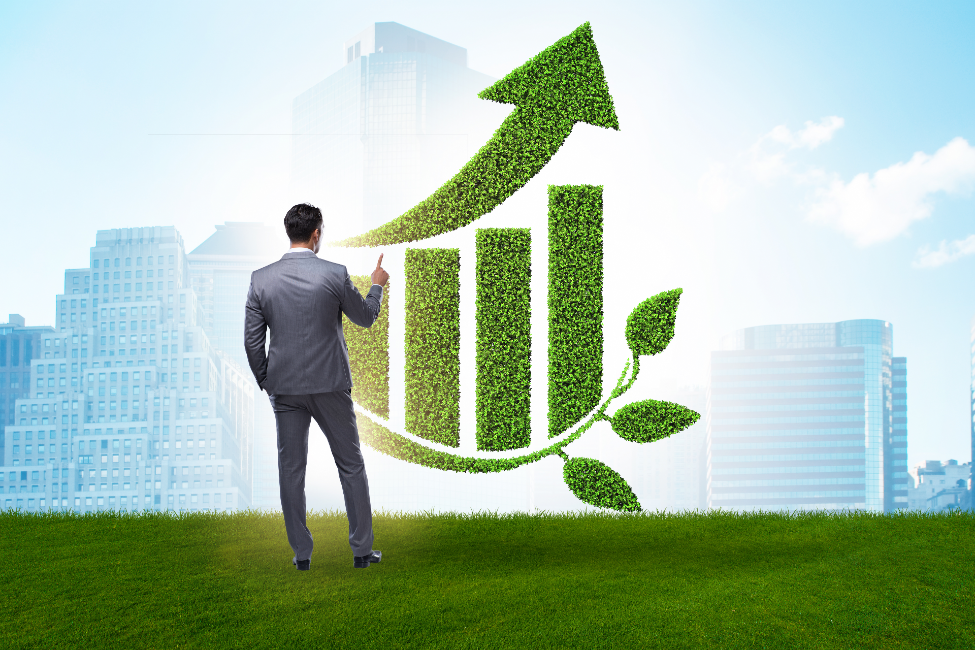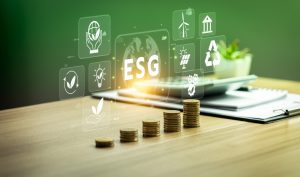Clean tech investments in the US have surged in recent years, driven by the nation’s focus on climate change and renewable energy. These investments, aimed at reducing environmental impact, are key to sustainable growth.
Anúncios
Clean tech spans industries focused on waste reduction, renewable energy, and energy efficiency, with immense potential for long-term economic growth. As global carbon neutrality goals rise, the demand for green technology innovations grows, offering abundant opportunities for investors who understand the sector’s dynamics.
Understanding the shift towards clean energy

The shift to clean energy is driving clean tech investments in the US, as fossil fuels become less viable environmentally and economically. Renewable sources like wind, solar, and hydropower are growing rapidly, spurred by government policies, consumer demand, and technological advancements aimed at reducing dependence on non-renewables.
Public policies, including incentives and regulations, support this transition, creating a favorable environment for clean tech. Technological innovations in battery storage, grid management, and energy efficiency are lowering costs and expanding clean energy adoption, offering strong investment potential in these sectors.
Renewable energy markets
The renewable energy market offers a promising investment opportunity, with wind and solar power experiencing impressive growth. Wind energy has become a key part of the US clean energy strategy, fueled by significant investments in infrastructure and technology.
Solar energy has also surged, thanks to advancements in photovoltaic (PV) cell efficiency and cost reductions, making installations more financially viable. Federal tax credits and state initiatives further support this growth, attracting investors.
As these markets expand, the demand for complementary technologies like energy storage rises. Breakthroughs in battery technology enhance renewable energy reliability, ensuring consistent energy delivery and boosting investment potential in the clean tech sector.
Energy efficiency and management
Energy efficiency remains a critical component of clean tech investments. Technologies focusing on reducing energy consumption while maintaining productivity are gaining popularity. Smart grid technologies, for instance, provide real-time monitoring of energy use, enabling more efficient distribution and reducing waste.
Buildings account for a significant portion of energy consumption in the US, making advancements in energy-efficient building technologies particularly important. Innovations like smart thermostats, LED lighting, and advanced HVAC systems offer substantial energy savings, lowering costs and reducing environmental impact.
Investors have recognized the value in these technologies and are investing in companies leading the charge towards more sustainable buildings. Moreover, energy management systems play a vital role in optimizing energy use in industrial and commercial sectors.
By employing software solutions that analyze and optimize energy consumption patterns, businesses can significantly cut down on energy use, resulting in cost savings and reduced carbon footprints. As companies strive toward sustainability goals, the demand for these solutions is expected to increase, providing lucrative opportunities for investors.
Opportunities and challenges in the US clean tech sector
Investing in the US clean tech sector offers significant potential, but also presents challenges. To navigate this, investors need to stay informed on market trends, regulations, and technological advances. Technological innovation stands out as a key opportunity, with cutting-edge research and venture capital backing the development of next-gen clean technologies.
However, investors must also address risks like policy uncertainty and market volatility, as government changes can affect subsidies, and rapid technological progress may make current solutions outdated. To succeed, diversifying investments and staying updated on industry shifts are essential strategies.
Policy landscape and regulatory support
The policy landscape in the US plays a significant role in the clean tech investment domain. Policies at both federal and state levels affect incentives, tax credits, and research funding that support the growth of clean technologies. Understanding these policies is crucial for investors to identify opportunities and assess potential risks.
Regulations mandating reduced carbon emissions and increased energy efficiency drive the adoption of clean technologies. For investors, being aware of these regulatory trends is key to predicting market movements and aligning investment strategies with compliance requirements. Engaging with policymakers and industry leaders can also provide insights that inform strategic investment decisions.
While policy support offers a favorable environment for clean tech investment, changes in administration or legislative priorities can introduce uncertainty. Investors must remain agile, ready to adapt strategies in response to policy shifts. Monitoring policy trends and engaging with advocacy groups can help mitigate risks associated with regulatory changes.
Technological developments and market trends
Technological advancements continue to transform the clean tech landscape, offering both opportunities and challenges for investors. Staying ahead of technological trends is crucial for making informed investment decisions. Breakthroughs in areas such as energy storage, smart grid technologies, and electric vehicles are reshaping the industry.
The electric vehicle (EV) market, for instance, has seen substantial growth driven by advancements in battery technology and increased consumer demand for sustainable transportation. Companies leading the charge in EV innovation present promising investment opportunities as they continue to expand production and infrastructure.
Staying abreast of technological and market trends requires continuous learning and adaptability. Investors must monitor these developments, assess their impact on the clean tech industry, and adjust their portfolios accordingly. Building a diverse portfolio that includes a mix of emerging technologies and established solutions can minimize risk and capitalize on the sector’s dynamic nature.






